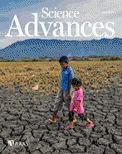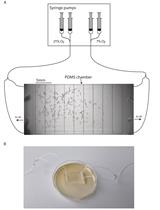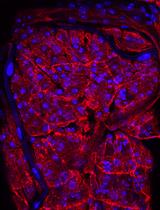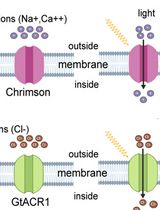- EN - English
- CN - 中文
Evaluating Baseline and Sensitised Heat Nociception in Adult Drosophila
评估成年果蝇的基线和致敏热伤害感受
发布: 2021年07月05日第11卷第13期 DOI: 10.21769/BioProtoc.4079 浏览次数: 3084
评审: Sunanda MarellaMadhumala K SadanandappaAnonymous reviewer(s)
Abstract
Chronic pain is a complex disease that affects a large proportion of the population. With little to no effective treatments currently available for patients, this malady presents a large burden to society. Drosophila melanogaster has been previously used to describe conserved molecular components of nociception in larvae and adults. However, adult assays tend to rely on avoidance behaviours, and whilst larval acute thermal avoidance assays exist, larvae are not best suited to a chronic pain scenario as the condition must be long-term. Therefore, an adult thermal nociception response assay was required to study injury-evoked changes in heat nociception threshold (allodynia and hyperalgesia) over time, and we describe such a protocol here. Following leg amputation, flies display increased thermal sensitivity (allodynia) to innocuous temperatures but not an increase in magnitude of response (hyperalgesia) to noxious heat. Our method allows for individualised analysis of both allodynia and hyperalgesia.
Keywords: Drosophila (果蝇)Background
Chronic pain represents a substantial burden on society. Patients with this malady often suffer and experience a reduced quality of life (Campbell and Meyer, 2006; Pfau et al., 2012). Importantly, available treatment options are ineffective for the majority of chronic pain patients (Turk et al., 2011); however, an understanding of the basic underlying biology will lead to effective therapeutics (Grosser et al., 2017).
Extensive modelling of chronic pain has been performed in rodents (Costigan et al., 2009); however, these systems are expensive, the genetics of evaluating mouse pain responses are slow, and inducing chronic pain in a significant numbers of animals is required, which can have ethical implications. In contrast, Drosophila are inexpensive to maintain, quick to raise, and have an extensive molecular toolbox that allows rapid genetic manipulation.
Much work has been done to define the underlying nociceptive machinery required for invertebrate “pain” perception (Tracey et al., 2003; Kang et al., 2010; Neely et al., 2010 and 2011; Hamoudi et al., 2018). These systems are primarily dependent on investigating nociception reflexes in the transient larval stage (Babcock et al., 2009 and 2011; Turner et al., 2016; Patel and Cox, 2017; Lopez-Bellido and Galko, 2020) or thermal avoidance assays in adult flies. The first adult Drosophila avoidance assay described involved a sealed tube, noxiously heated, and a light source at one end, which flies were prevented from reaching because of a noxious heat barrier (Manev and Dimitrijevic, 2004). An alternate acute heat nociception system relied on floating a sealed “heat” chamber on hot water, where one surface of the chamber was then rapidly heated to 46°C, while the other reached 31°C during a 4-min trial. Flies with intact heat nociception avoided the hot surface, whereas flies that could not sense heat, or those that had heat-related motor issues or other confounding phenotypes, would fail to avoid the hot surface and rapidly become incapacitated (Neely et al., 2010).
While these assays are useful for assessing a loss of acute heat nociception, they are ineffective for evaluating sensitisation of nociceptive pathways. Here, we present an adaptation of our previously described method (Khuong et al., 2019) for analysis of acute thermal nociception responses, which allows for individualised assessment of both allodynia and hyperalgesia following injury.
Materials and Reagents
Sigmacote (Sigma Aldrich, catalog number: SL2)
Falcon bacteriological Petri dish lids, sizes 35-60 mm (Falcon, Corning, catalog number: 351008)
Sandpaper
Heat Sink Compound (RS, RS Pro, catalog number: 554-311)
Organic Fine Corn Flour (HBC Trading Australia, TUN number: 19339337303842)
Molasses (Whole Body Health Company, catalog number: MOL 600)
Yeast torula type B (H.J. Langdon Co., catalog number: 45014)
Agar 750 g (H.J. Langdon Co., catalog number: 44305)
Dulux Metalshield Flat Vivid White Epoxy Enamel Spray Paint (or similar) (Dulux, catalog number: 32C04912)
Diets (see Recipes)
Equipment
Bottle 6 oz square bottom PP (Pathtech, Genesee Scientific, catalog number: 076-32-130F)
Drosophila vials, Narrow, PS (Pathtech, Genesee Scientific, catalog number: 076-32-109)
Benchtop Flowbuddy Complete (Pathtech, Genesee Scientific, catalog number: 076-59-122BC)
FitoClima 600/1200 PLH Insect Research Chamber (Aralab)
Superfine Vannas Scissors, 8 cm (World Precision Instruments, catalog number: 501778)
Viltrox LL-126VB LED light (Viltrox, catalog number: LL-126VB)
Hot/Cold plate NG (Ugo Basile, catalog number: 35150)
Testo 925 K input handheld digital thermometer (RS, testo, 0560 9250)
C920 HD pro webcam (Logitech, catalog number: 960-000764)
Aluminium plate (200 × 200 × 3 mm), manufactured in-house
Software
BORIS (Friard and Gamba, 2016, https://www.boris.unito.it/)
Ctrax (Branson et al., 2009, http://ctrax.sourceforge.net/)
any2ufmf (Branson et al., 2009, http://ctrax.sourceforge.net/any2ufmf.html)
R (R foundation, https://www.r-project.org)
R Studio (https://www.rstudio.com)
Github Repository (https://github.sydney.edu.au/jmas3890/Hot-Plate-Assay.git)
Procedure
文章信息
版权信息
© 2021 The Authors; exclusive licensee Bio-protocol LLC.
如何引用
Readers should cite both the Bio-protocol article and the original research article where this protocol was used:
- Massingham, J. N., Baron, O. and Neely, G. G. (2021). Evaluating Baseline and Sensitised Heat Nociception in Adult Drosophila. Bio-protocol 11(13): e4079. DOI: 10.21769/BioProtoc.4079.
- Khuong, T. M., Wang, Q. P., Manion, J., Oyston, L. J., Lau, M. T., Towler, H., Lin, Y. Q. and Neely, G. G. (2019). Nerve injury drives a heightened state of vigilance and neuropathic sensitization in Drosophila.Sci Adv 5(7): eaaw4099.
分类
神经科学 > 感觉和运动系统 > 动物模型
神经科学 > 神经系统疾病
您对这篇实验方法有问题吗?
在此处发布您的问题,我们将邀请本文作者来回答。同时,我们会将您的问题发布到Bio-protocol Exchange,以便寻求社区成员的帮助。
提问指南
+ 问题描述
写下详细的问题描述,包括所有有助于他人回答您问题的信息(例如实验过程、条件和相关图像等)。
Share
Bluesky
X
Copy link












